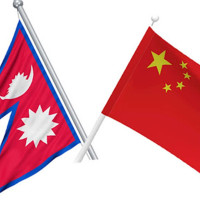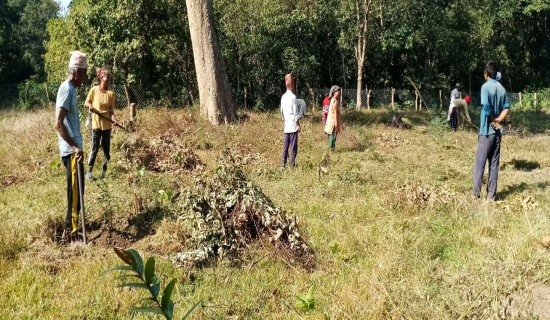- Sunday, 14 December 2025
Impact Of Trump Aid Suspension
Giving aid is not purely an act of kindness. It has both seen and unseen motives. In most cases, foreign aid is a tool to promote national interests. There is no free lunch. With Donald Trump taking to the presidential seat in the USA, a US official categorically stated that “US should only spend abroad if it makes America "stronger", "safer" or "more prosperous". However, the world needs more redistribution if it has to overcome poverty and inequality as stated in the Sustainable Development Goals (SDGs), making the world a safer place for all. US global leadership and its grant aid are critically interlinked.
Following this statement, the US State Department has issued a halt to nearly all existing foreign assistance (grants) and paused new aid. The new US president seems to view foreign aid as a waste and he declared for a thorough review and cut down in the US foreign aid. He wants to take this time for a critical review of existing US aid policy and align it with his vision. If he keeps the election vows, many countries will not receive aid from the US after the review in the next 90 days.
Biggest donor
As the largest economy, the US is the world's biggest international donor. It spent nearly $68 billion on about 15,000 activities in 204 countries in 2023 alone. For 2024, it was $39 billion, 8,000 activities and 189 countries. This is nearly three times the annual budget of Nepal for the fiscal year 2024-25. While the US spent nearly $50 billion on average in the last decade, the spending for the last year was already substantially reduced by about 26 per cent for unknown reasons. This is a 47 per cent reduction compared to the 2023 spending. This is less than one per cent of the US annual budget. Only the Nordic donors comply with the one per cent grant rule.
This is going to affect several developing countries as any US aid is now subject to new approval. This means that ongoing development projects supported by the US may have to be closed down around the world in nearly 200 countries. Some staff of the US aid agency USAID will also lose their jobs as it will not get funding. Both the project staff and beneficiaries will be affected. Some US staff and consultants will also be fired. Others will not get the benefits from as many as 8,000 projects worldwide. The effect seems to be massive if all projects are terminated and other agencies, such as the United Nations organisations or emerging donors such as China or national governments, do not take them up immediately.
Developing countries will have to end the US aid projects while the US will lose its global influence. Experts have argued that the move could affect a wide range of critical development projects globally including water, health, sanitation and shelter. Some of the ongoing developmental projects will be terminated without completion thereby not getting expected benefits. The proposed budget freeze is likely to undermine the global leadership of the US as the richest and the most powerful country on earth. Many have argued that the richest country should not stop giving to the less fortunate as it is the duty of the rich to share some of its resources with others.
Nepal will also be affected by the US aid review. The US provides aid to Nepal under three themes: federalism; inclusion; and strengthening institutions and resilience. Under these core areas, the US provides support to Nepal for agriculture, good governance, disaster resilience, physical infrastructure, education, health and sanitation via its aid agency USAID. It is the oldest and biggest bilateral donor of Nepal and has promised to provide $659 million or around Rs. 81 billion for the 2020-2025 period (about Rs. 16 Arab annually).
Community development
The USAID channelises most of the aid money through local Non-Governmental Organisations (NGO) in Nepal, and thereby most of its budget is off-budget. As the agency traditionally prefers community development approach, local NGOs implement most of the US projects in Nepal. These NGOs and their staff are likely to be directly affected by the aid cut. Beneficiaries of the ongoing USAID projects in health and other sectors will also be affected. The US has also been providing support through Millennium Challenge Account (MCA) for the power and road sectors as well as through the annual budgetary system of the Nepal government. It also partners with the Nepalese private sector to foster US profit-oriented investments in Nepal.
To conclude, the US grant aid to the world and Nepal is very vital. While the potential US aid discontinuity is unexpected news as it may undermine critical developmental and humanitarian needs of the developing countries and thereby the achievement of the SDG targets by 2030, it is also likely to reduce the existing global leadership of the US, opening this space for emerging donors such as China. The US can only be safer, stronger and more prosperous in a poverty and inequality-free world. While Nepal aims to graduate from the poorest status by 2026 and achieve SDGs by 2030, the US, as the oldest development partner and a trusted friend, should not stop its grants.
(Dr. Bhusal writes on development issues.)
















